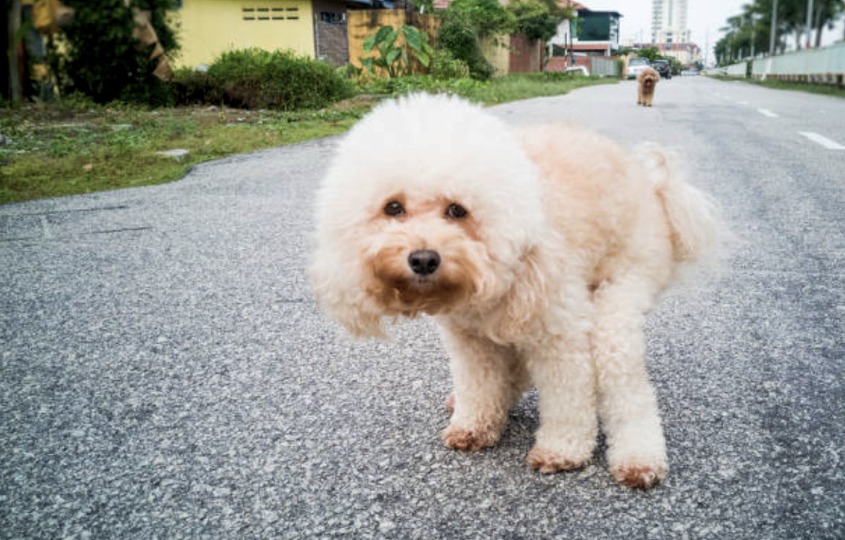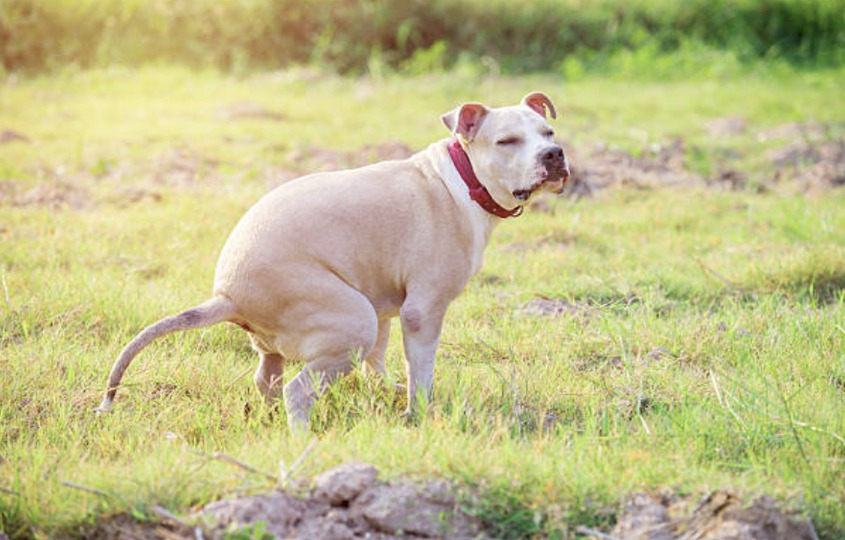Your dog stays hunched over as if he still needs to go but cannot. Sometimes before that, he eliminates a bout of explosive or watery stool. It’s a sign of diarrhea. Some would mistaken it as constipation. It’s not a question of if you will be faced with a case of diarrhea, but when. If you think about it, we humans sometimes have it too. Knowing what to expect and how to help your dog manage it in advance is the key.
So, what causes diarrhea in pets? While the reasons are many and varied, most common are:
– Your pet eats something he shouldn’t, causing gastrointestinal (GI) upset.
– A sudden change in diet.
– Food allergies. (When we typically think food allergy symptoms as involving excessive itching and scratching. But actually inflammatory bowel disease (IBD) and irritable bowel syndrome (IBS), formal medical terms have intermittent loose stools or diarrhea as a side effect)
– Parasites.
– Viral and bacterial Infections in the GI tract.
– Pancreatitis.
– Stress.
When it’s okay to put your pet under observation at home and when it’s serious?
Usually a young, healthy dog will have one episode of loose stool or diarrhea and that’s it. It’s self-limiting and over quickly. If your dog or cat seems fine and healthy after a bout of diarrhea, it’s safe to simply monitor him.
However, if your pet is developing lethargy, a fever, or change in behavior, you should bring him to your vet. If your pet has recurrent episodes of diarrhea that don’t seem to be resolving, you should book for a non-emergency vet appointment. If the stool of your pet has blood or if you notice any signs of weakness along with the diarrhea, it’s important to have your vet examine him quickly. And your vet will thank you if you can bring in a sample of his stool, by slipping it into a plastic sealed bag. Your vet can possibly do a fecal check to see if there’s a bacterial or viral agent in it.

What to feed your pet with diarrhea?
If your pet is otherwise healthy and his behavior is normal, Dr Karen Becker, a reputable holistic vet in the US, recommends withholding food – not water – for 12 hours. Make sure water available because your pet has risk of dehydration. After 12 hours, begin a bland fat-free diet e.g. cooked ground turkey, and canned 100% pumpkin. If canned pumpkin isn’t available, you can use cooked sweet potato. Mix the turkey and pumpkin 50/50.
Some may suggest rice, however rice is complex carbohydrate which tends to ferment and might make the pet gassy. It also often passes right through the GI tract, exiting with the next bout of loose stool in exactly the same condition it entered.
If the diarrhea persists for more than 3 days, it’s time to check in with your vet.
Preventive measures you can do
Keep home clean and your pet out of the garbage: Dogs, especially young ones, are inquisitive about their environment, and they investigate with their mouths. We just have to try our best to keep our pets out of paper towels, leftovers, rubbish and etc.
Slow transition to new food: If you feed your dog the same food every day, month after month, suddenly switching to a new diet guarantees a case of diarrhea. It’s NOT the fault of the new food, it’s because you pet’s gut has been conditioned to be “monotone”. So, it’s best to make the transition very slowly, for example 10% of the new food, and 90% of the old food for more than a week or two, then move to 80/20, 70/30, 60/40 and so forth.
Related reading: Do you have an itchy dog?
Relating reading: A tiny tick can kill if left untreated. What can we do now than later?
Source: Dr Karen Becker
Hellodog does not provide medical advice, diagnosis or treatment. See more details here.
